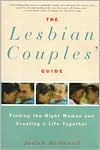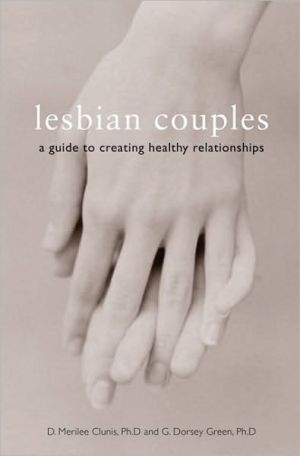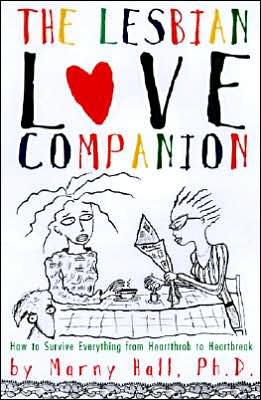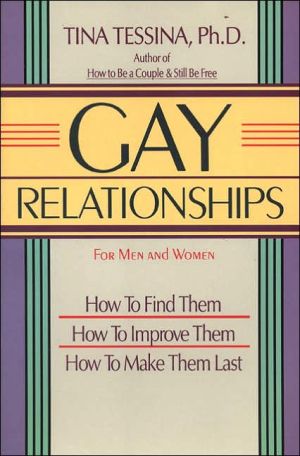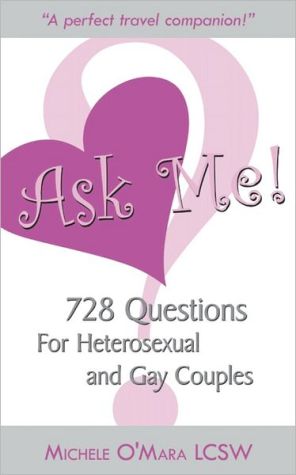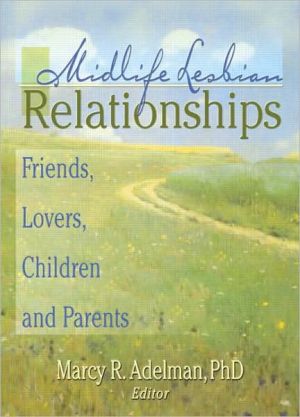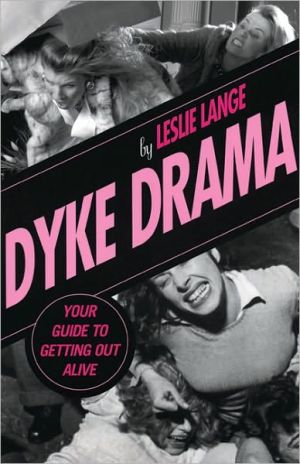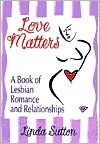Lesbian Couples' Guide: Finding the Right Woman and Creating a Life Together
A complete guide to lesbian relationships that explores both the practical and emotional dimensions of being a lesbian couple in today's society.
Search in google:
A complete guide to lesbian relationships that explores both the practical and emotional dimensions of being a lesbian couple in today's society.
Introduction\ Iwas sitting in a bar with a friend in the early seventies. It was St. Patrick's Day and we were trying to ignore the party happening on the other side of the room. I was talking intently to this woman friend, talking intimately. We were very involved in one another and it wasn't hard to ignore the other bar patrons. Until one of them staggered up to our booth, looked us up and down lecherously, and asked, "Are you girls alone?" Without thought, and certainly without preparation, I looked him dead in the eye and replied, "No, we're together." We were. Two women together. He didn't know what to make of my reply, scratched his head for a moment, then wandered back to his friends, muttering, "Together. They say they're together." And we were.\ When I first began to consider writing a book about and for lesbian couples, for two women together, I wondered what I could say that would be of interest to the wide spectrum of women who are lesbians, women who are as different from one another as any fantasist could possibly imagine, except in one crucial way: we all choose women as our life partners, our intimate partners, our sexual partners. That choice, its joys, puzzles, and difficulties, is what this book is about.\ I define the term lesbian in the context of self-knowledge and self-definition. Do I know myself and my desires as lesbian? Do I describe myself as lesbian? A woman who so describes herself may choose a woman for her sexual partner. She may want and find a life partner, or she may not ever want to live with another woman. A woman who is a lesbian may choose a woman for her life partner and never be sexual with her or any otherwoman. A woman who is a lesbian may find her primary social satisfaction in the company of other lesbians, or she may not. The reverse is also true. Women who are not lesbians can and have lived together companionably for decades. Women who are not lesbians have sometimes chosen other women for sexual partners. I don't think we need to describe those women's reality for them; nor do we need to assume that they are only responding to internalized homophobia and/or self-hatred in denying they are lesbian.\ I am a lesbian. I have known myself and my desires in that way since before I had a name for the feelings. In my teens and twenties, by and large I succeeded in suppressing those feelings and presenting a heterosexual front to myself and the world. Not until I was thirty did I figure out how to act on those feelings, but I've been acting on them now for more than twenty years. Today I live with Jan, my lover, in a committed, monogamous relationship. Several years ago we decided to make a public statement about our relationship and had a Quaker wedding in which we spoke our commitment to one another in the presence of our friends and families.\ I am also a white middle-class, academically trained, self-employed lesbian. The women I share values and community with do not all fit that description. I have never owned a motorcycle or gotten a tattoo or been to a women/lesbian music festival or tried s/m sex. Some of my lovers and friends have. These are not the issues that would divide my community. The women in my community may have different tastes than I, may find their excitement in different places than I, but they are women who respect their own choices and the choices of others.\ "I am large . . . " said gay poet Walt Whitman in 1855, "I contain multitudes." So also does that entity we refer to as "the lesbian community," as though it had a single identity. A strong lesbian community means not just acknowledging our diversity, but encouraging and celebrating it. And a healthy diversity means welcoming into this lesbian community the lipstick lesbians, the dykes on bikes, the butch/femme couples, the s/m players, the wimmin on the land who want to build a blood hut to celebrate menstrual cycles, the academic lesbian professors, and all the varieties of lesbians who arrive at their sexual orientation in the context of a racial/cultural community: the Asian American lesbians, African American lesbians, Native American lesbians, the Irish Catholic lesbian nuns, and many, many more lesbian communities.\ Recently, lesbians have been brought more into the consciousness of Middle America--the covers of Newsweek, Vanity Fair, on sitcoms like Roseanne and in films like Orlando. While the closet can be a dark and guilt-ridden place, there are days when it's starting to look like a haven. Did you ever expect to hear Barbara Walters explaining the difference between butch and femme? The dangers of being chic and of being demonized are opposite sides of one coin. Others still have the power to define us, to name us to ourselves, and in that describing, they can shape our lives. We need to take that power for ourselves; we need to describe our own lives.\ I hope this book will help us to look with new eyes at the realities of lesbian couples. We all--new lesbians and experienced ones, couples of a few days and of many years--need to be reminded both that loving other women puts us off most psychological and sociological "norm" charts and that women have been loving one another like this for years, for centuries. We can learn some lessons from our history--both recent and distant.\ Being aware of the issues is a major step toward personal growth and community development. It can also be terrifying, or at least anxiety producing, because most often awareness puts us in a new place, foreign territory. I like to think of The Lesbian Couples' Guide as a new kind of road map, one that will take us to places we've always wanted to go and show us a few of the best tourist highlights on the way.\ Finding the Past, Creating the Future\ Women have always chosen one another for lovers, companions, intimate friends. While for our lives in our times I define lesbian in terms of self-knowledge and self-definition, women who were lesbians in other times may not have named themselves or their relationships. And because those relationships were unnamed or were called by names meant to disguise rather than reveal their nature, it was possible to assume that lesbians didn't exist before the middle part of the twentieth century. They did exist, of course, in spite of the often repeated apocryphal story about why only male homosexuality was banned in England in the nineteenth century: Queen Victoria couldn't imagine what two women might do together and so refused to entertain outlawing something that could not exist. At least, that's the story I've heard.\ In Surpassing the Love of Men: Romantic Friendship and Love Between Women from the Renaissance to the Present,1 Lillian Faderman examines the cult of "passionate friendships" between women, excavating beneath the surface representation for suggestions--or evidence--that lesbians existed before the term lesbian came into being as a cultural, psychological, and medical creation. If the term lesbian today means more than sex, which I insist that it does, is it important whether or not our historical predecessors did or did not engage in genital sexual contact? Yes, I think so. Look at nineteenth-century history. An entire culture proclaimed that women had no sexual desire of any description and that allowing her husband to have sexual access was a woman's unpleasant and necessary duty, but why should we today perpetuate that Victorian falsehood? We know better. So did many Victorians. We can't, of course, say which Victorian women couples were having hot, satisfying genital contact and which weren't. As Faderman and Carroll Smith-Rosenberg have pointed out, romantic expressions of undying eternal love to a female friend were both fashionable and allowed to our great-great-grandmothers. We cannot presume that those expressions had the same meaning then that they would have today. As the anecdote about Queen Victoria illustrates, the commonly held view of sexuality in the nineteenth century was that sex was something penises did. Our lesbian foremothers may have been having what we consider sex, but they might not have named it that. Nonetheless, I don't think we should deny the full potential of their loving, the full range of expression of that loving.\ That some of those relationships were, in fact, more than "romantic friendships" was documented by Judith C. Brown in 1982, when she discovered an obscure document detailing the trial of a nun in Renaissance Italy who was involved in a specifically sexual relationship with another nun. The ecclesiastical investigation into the case of Abbess Benedetta Carlini dates from the years 1619-23 and is extraordinary because it is the only one of thousands of same-sex cases, tried by lay and ecclesiastical authorities during this period, that involved women.4 According to the transcript, Benedetta imagined herself in the form of a male angel she called Splendidiello when she made love to the nun whose testimony convicted her--an image that simultaneously startles me with its bold assertion and saddens me. I wonder what she truly thought or felt when she bent her head "to put her face between the other's breasts and kiss them."
